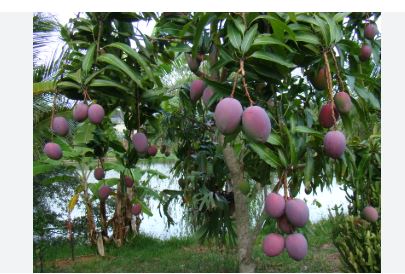
Tommy Atkins mangoes belong to the species Mangifera indica, part of the Anacardiaceae family, which also includes cashews and poison ivy. Native to South Asia, this tropical evergreen tree has been cultivated for millennia, resulting in numerous cultivars like Tommy Atkins. This variety, specifically bred for commercial appeal, reflects the diverse botanical lineage of mangoes, which thrive in warm climates and are prized for their stone fruit.
The Tommy Atkins mango emerged in the early 20th century in Florida, USA. It originated from a seed of the Haden mango, planted around 1922 on the property of Thomas H. Atkins in Broward County. Atkins, a horticulturist, championed the fruit despite initial rejection by the Florida Mango Forum in the 1950s due to its fibrous texture and modest flavor. Recognizing its vivid color, disease resistance, and shipping durability, he marketed it to growers. By the late 20th century, Tommy Atkins became the dominant commercial mango in the Americas, especially in the U.S., where it now accounts for about 80% of imported mangoes.
Tommy Atkins mangoes are medium to large, typically oblong or oval, weighing 12–24 ounces. Their thick, leathery skin transitions from green to a striking red blush with yellow-orange highlights as they ripen, dotted with small greenish-yellow pores. The golden-yellow flesh is firm, juicy, and notably fibrous, encasing a large, flat pit. Their taste is mildly sweet with a subtle tart edge, lacking the intense complexity of varieties like Alphonso. The aroma carries faint tropical and citrus notes, making it a solid, if not standout, choice for everyday use.
Tommy Atkins mangoes offer a solid nutritional profile. They’re rich in vitamin C, providing immune support and antioxidant benefits, and vitamin A, which promotes eye health. A cup (about 165 grams) delivers roughly 100 calories, 3 grams of fiber for digestion, and decent amounts of potassium, calcium, and iron for muscle, bone, and energy functions. They also contain digestive enzymes and folate, aiding metabolism. However, their skin and sap can irritate sensitive individuals, akin to poison ivy, due to shared family traits.
Tommy Atkins mango trees flourish in USDA Hardiness Zones 10–11, where temperatures stay above 40°F (4°C) and ideally hover between 70–95°F (21–35°C). They need full sun—6–8 hours daily—and a tropical or subtropical climate with a dry season to spur flowering, followed by humidity for fruit set. In the U.S., they’re grown commercially in Florida, parts of California, and Hawaii. Outside these zones, frost-sensitive trees require greenhouses or indoor protection, making them less practical for colder regions.
Culinary Applications of Tommy Atkins Mangoes
- Fresh Slices: Peeled and cut into chunks, they’re a juicy, mildly sweet snack or garnish for breakfast bowls with yogurt and granola.
- Smoothies: Blended with banana, spinach, or coconut water, their vibrant flesh adds color and a subtle tropical boost.
- Salsas: Diced with onion, jalapeño, and lime, they bring a sweet-tart balance to grilled fish or chicken dishes.
- Salads: Cubed and tossed into green or fruit salads, they pair well with arugula, feta, or berries for a refreshing twist.
- Grilling: Skewered or halved and grilled, their firmness holds up, caramelizing slightly to complement savory meats like pork.
- Purees: Cooked down into sauces or dips, they enhance curries, marinades, or dressings with a smooth, fruity base.
- Desserts: Chopped into fruit tarts or layered in parfaits, they add a bright note without overpowering other flavors.
- Jams: Simmered with sugar and a touch of spice, their texture works for chunky preserves to spread on toast or pair with cheese.
Cultivation of Tommy Atkins Mangoes
- Climate: Tommy Atkins mangoes thrive in tropical and subtropical climates, preferring temperatures between 70–95°F (21–35°C) with a dry season (2–3 months) to trigger flowering, followed by warm, humid conditions for fruit development.
- Soil: They adapt to a range of well-drained soils—sandy loam, clay loam, or even rocky types—with a pH of 5.5–7.5, tolerating less-than-ideal conditions better than some finicky cultivars.
- Propagation: Commercial growers favor grafting onto resistant rootstocks like ‘Turpentine’ or ‘Number 11,’ ensuring the cultivar’s traits and speeding fruit production (within 3–5 years) compared to seed-grown trees.
- Planting: Trees are spaced 20–30 feet (6–9 meters) apart in orchards, planted at the onset of the rainy season to establish roots, typically in holes enriched with compost or manure.
- Irrigation: Young trees need consistent watering (1–2 times weekly) for the first 2–3 years; mature trees rely on seasonal rains, with supplemental irrigation during dry spells to boost yields.
- Pruning: Annual pruning after harvest removes dead branches, opens the canopy for sunlight, and controls height (often kept at 10–15 feet or 3–4.5 meters) for easier picking in commercial settings.
- Fertilization: A balanced mix of nitrogen, phosphorus, and potassium (e.g., 10-10-10) is applied 2–3 times yearly, with micronutrients like zinc and magnesium addressing deficiencies common in sandy soils.
- Flowering: Induced by drought stress or cool nights (50–60°F or 10–15°C), flowering occurs in late winter to early spring; hand-pollination or insect activity (bees, flies) ensures fruit set in cooler regions.
- Fruiting: Fruits develop over 90–120 days, ripening from May to August in the Northern Hemisphere; each tree can bear 200–400 mangoes annually by maturity (7–10 years).
- Pest Management: Resistant to some diseases, they still face mango hoppers, fruit flies, and anthracnose, controlled with neem oil, traps, or fungicides like copper-based sprays, timed to pre- and post-bloom stages.
- Harvesting: Fruits are picked mature but green (firm, with a slight give), often with clippers to avoid sap burn, then ripened off-tree in controlled conditions for uniform quality and shipping durability.
- Yield Optimization: Commercial growers may use growth regulators (e.g., paclobutrazol) to curb excessive vegetative growth and promote consistent fruiting, countering the cultivar’s tendency toward biennial bearing.